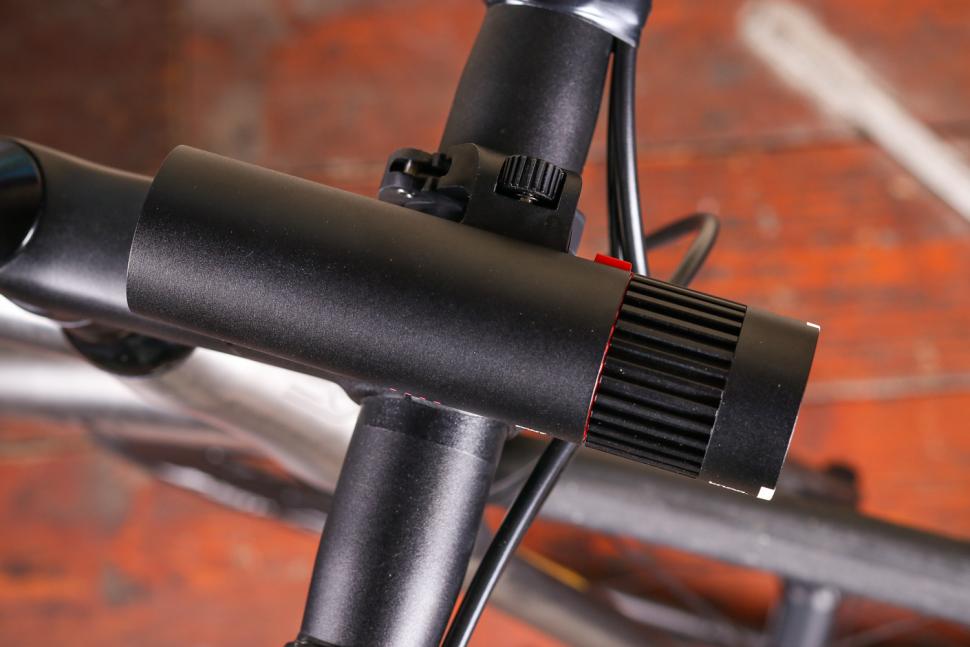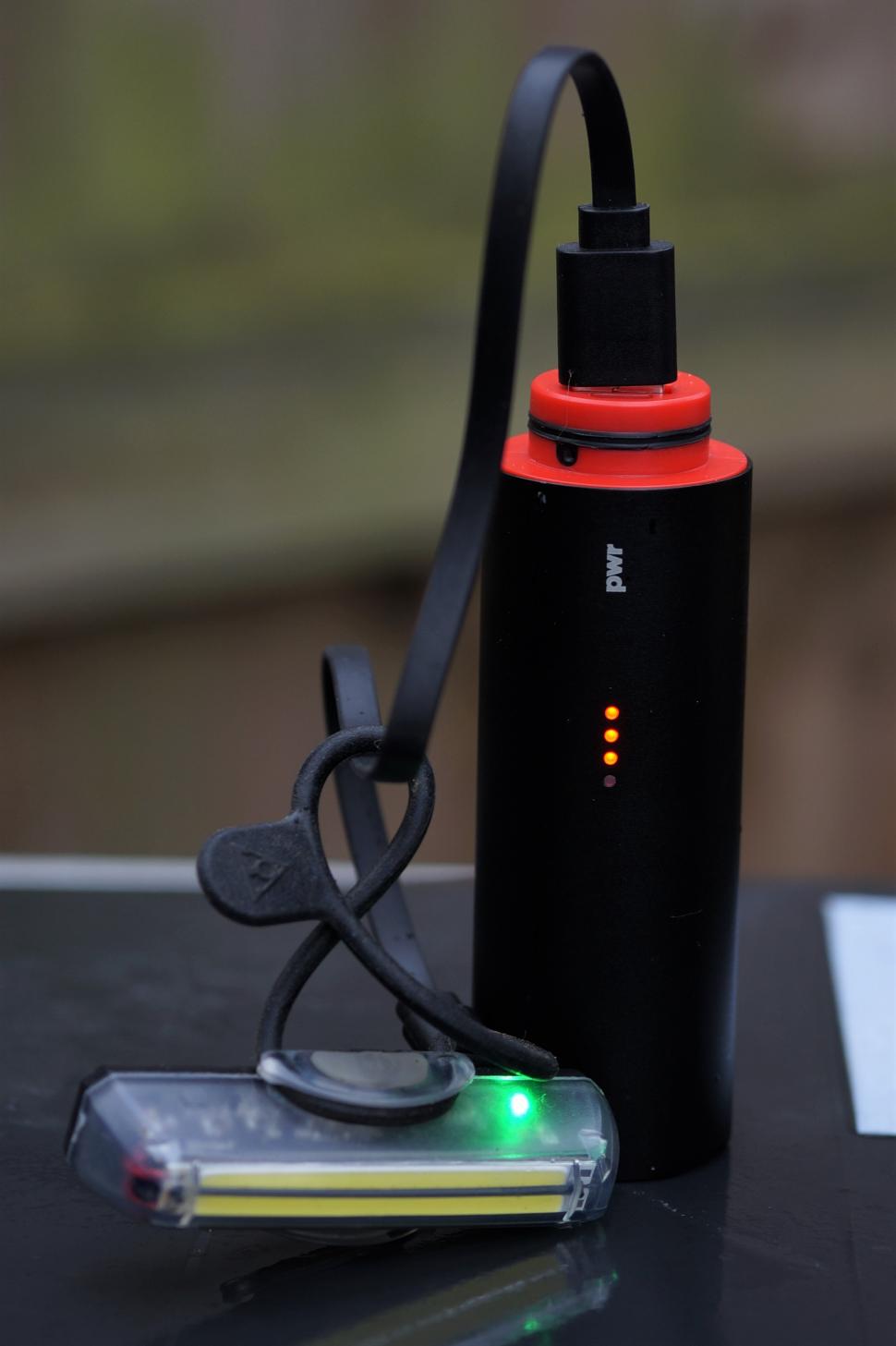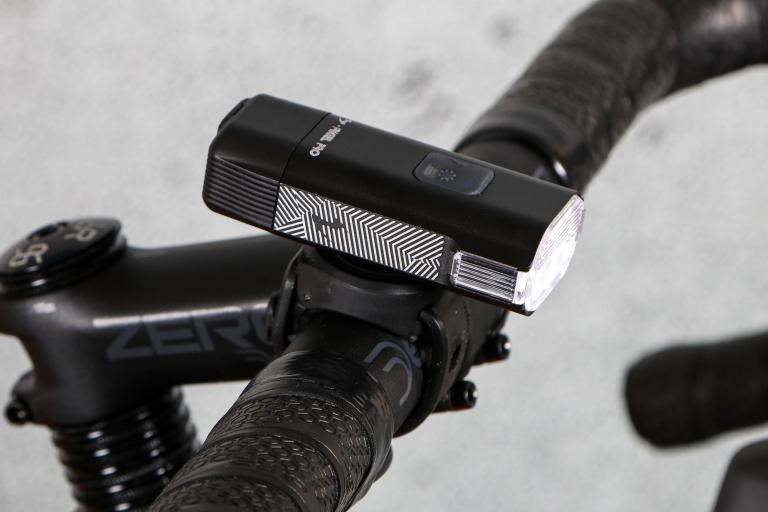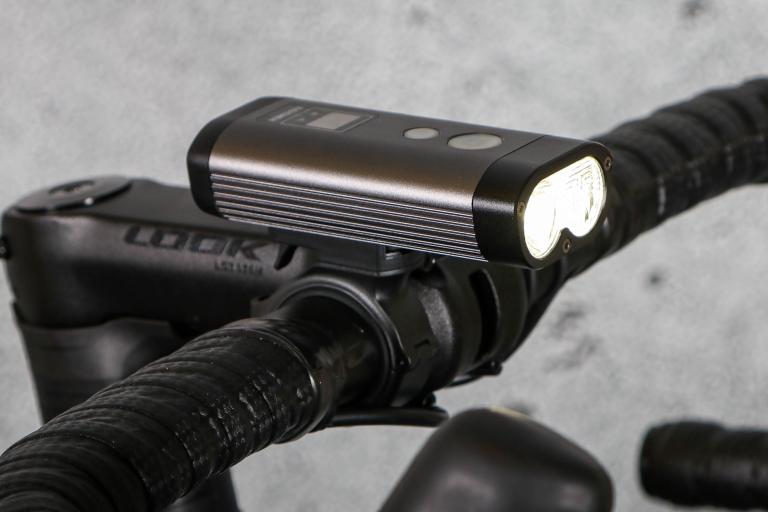- News
- Reviews
- Bikes
- Accessories
- Accessories - misc
- Computer mounts
- Bags
- Bar ends
- Bike bags & cases
- Bottle cages
- Bottles
- Cameras
- Car racks
- Child seats
- Computers
- Glasses
- GPS units
- Helmets
- Lights - front
- Lights - rear
- Lights - sets
- Locks
- Mirrors
- Mudguards
- Racks
- Pumps & CO2 inflators
- Puncture kits
- Reflectives
- Smart watches
- Stands and racks
- Trailers
- Clothing
- Components
- Bar tape & grips
- Bottom brackets
- Brake & gear cables
- Brake & STI levers
- Brake pads & spares
- Brakes
- Cassettes & freewheels
- Chains
- Chainsets & chainrings
- Derailleurs - front
- Derailleurs - rear
- Forks
- Gear levers & shifters
- Groupsets
- Handlebars & extensions
- Headsets
- Hubs
- Inner tubes
- Pedals
- Quick releases & skewers
- Saddles
- Seatposts
- Stems
- Wheels
- Tyres
- Health, fitness and nutrition
- Tools and workshop
- Miscellaneous
- Cross country mountain bikes
- Tubeless valves
- Buyers Guides
- Features
- Forum
- Recommends
- Podcast
review
£109.99
VERDICT:
Useful commuter-cum-trail light with added value, but it faces stiff competition and the mount could be better
Weight:
230g
Contact:
At road.cc every product is thoroughly tested for as long as it takes to get a proper insight into how well it works. Our reviewers are experienced cyclists that we trust to be objective. While we strive to ensure that opinions expressed are backed up by facts, reviews are by their nature an informed opinion, not a definitive verdict. We don't intentionally try to break anything (except locks) but we do try to look for weak points in any design. The overall score is not just an average of the other scores: it reflects both a product's function and value – with value determined by how a product compares with items of similar spec, quality, and price.
What the road.cc scores meanGood scores are more common than bad, because fortunately good products are more common than bad.
- Exceptional
- Excellent
- Very Good
- Good
- Quite good
- Average
- Not so good
- Poor
- Bad
- Appalling
The Knog PWR Trail is a 1000-lumen light with reasonable tuneability, able to provide sensible outputs for commuting. The battery doubles as a power bank for refuelling other tech on the go, and it's designed so you can add other lighting heads from the PWR family. The slimline bracket could be better, though.
- Pros: Tuneable modes, sensible output, generally rugged construction
- Cons: Bracket could be better
> Find your nearest dealer here
Specification
The build quality looks and feels impressive thanks to the CNC machined aluminium head and solid battery-cum-power bank. Aluminium shells not only resist everyday knocks well, they also dissipate heat so internals won't get fried.
The head is interchangeable with the 3350mAh, 5000mAh and 10,000mAh PWR banks, connecting via a USB memory stick style plug-in. The stock unit is 1,000 lumens, but there's a 2,000-lumen aftermarket option should you require the additional firepower.
There are three main diodes and another nine running around the perimeter.
Knog doesn't cite an IPX rating, but it's resisted torrential rain and passed my garden hose 'torture test' with flying colours, so it's as weatherproof as most of us will need.
The machined cowling doubles as a switch, so there's little chance of accidental engagement.
Stock, there are six modes – three constant: Max, the full 1,000, reckoned to enjoy a 2hr run-time; Mid, 550 lumens, returning 3hrs from a full charge; and a fuel-sipping 80-lumen Stamina, reckoned good for 21hrs.
Then we have the three pulsing/flashing options: Pulse (300 lumens, 8hr), Strobe Flash (225/14hr) and the 15-lumen Eco-Flash, reckoned to run for 300 hours between charges.
You can also customise the light to suit your riding via Knog's PC and Mac-friendly Mode Maker app, which allows you to tweak modes and outputs. Doing so requires coupling the light head to your computer via the supplied cable, though it's not quite plug 'n' go: you'll need to register the light and create an account before you can choose the options you want.
There are 13 flashing and strobing combinations to play with, and scrolling through the modes can be a laborious task, though the light does have a memory function.
Bracket
The bracket is a slender, hinged clamp design that supposedly accommodates bar diameters from 22.2 to 31.8mm. The power bank's groove slides into it and locks in situ via the thumb wheel. Removal and refitting isn't intuitive and it took a few practice runs before I had it sussed. It can be mounted above or beneath the bar for a neater look, and without affecting the beam pattern/quality.
I fitted it to a Genetic D-Riser 16 bar but had to craft a shim from an old butyl tube to accommodate it, since I didn't want to relocate the bar cam and other fixtures.
Achieving a precise, vice-like fit took some trial and error, and during our first (road) outing the quick release loosened, resulting in the battery crashing to the floor. Aside from a minor cosmetic dent it's unhurt, but I would welcome a more substantial bracket with a wider surface area.
Performance
This is a trail-biased light, so I wasn't surprised that the broad, flat beam offered less navigational prowess along pitch black country lanes than a hybrid beam pattern that can really pick out the details (such as the Ravemen PR1200). I was able to ride at 20-22mph, and the wide beam did offer a decent sweep of potential hazards including thorns, impacted dung and woodland rodents, typically with around 15 feet of notice.
It seemed to induce caution among oncoming SUVs and similarly large vehicles, and friends reckoned they could spot me at 75-80 metres, but compared with the Ravemen mentioned above, the PWR's beam was in dazzle territory, and even allowing for the programmable settings and twist grip switch, nudging down to the 550 was more of a faff than some.
Along unmade roads, performance was good enough for 17mph or so, giving a good overview of conditions ahead. I was also pleased to note my custom-made butyl shim also counteracted any vibration-induced slippage.
> Buyer's Guide: The best 2019/2020 front lights for cycling
Some have suggested you can get away with the 550-lumen mode away from the asphalt, but although optical technology is improving all the time, I'd still want more oomph for anything darker than towpath or semi-rural roads.
It has plenty of bite in the seen-with sense, mind. Oncoming vehicles tended to dip at around 50 metres, and the beam's peripheral sweep affords plenty of presence, the sort welcome at roundabouts and darker junctions, although it's a little too aggressive for the suburbs.
Here the 80-lumen is perfectly adequate, and great if you've been out longer than planned and need to conserve some reserves. That said, since town riding's about being conspicuous, I'd be inclined to create something flashing/pulsing using the app.
The stock flash/pulsing modes were good when I'd paired the PWR with a pre-standlight dynamo, giving plenty of presence at both unlit crossroads and in the concrete jungle.
Battery life claims were pretty accurate: I got within sniffing distance of the claimed 2hrs on the 1,000-lumen setting (1hr 54mins), 2hr 56mins on the 500-lumen, and over 20hr for the 80-lumen.
Power bank
Lights that double as charging devices are becoming increasingly mainstream, and I've found the Knog system quite useful, like on big night rides alongside my high power (1,300 lumen) dynamo lamps, using the PWR's power bank to fuel phones, blinkies and so on.
Yes, we've been able to charge stuff with some dynamos for some time, but I really appreciated the PWR's convenience and it does a decent job of fuelling to genuinely practical levels. It put a full charge in my smartphone battery (with the power bank at 40%) and also fully fuelled a couple of 30-lumen blinkies on another occasion.
Value
Viewed as a complete and tuneable system rather than as a high power light, it seems a reasonable package for the money. However, for me it's trumped by the Ravemen PR1200, which is £10 cheaper: quality of output is superior, run-times are acceptable, it has a plug-in remote and it'll also charge our beloved gizmos.
If you can forgo the power bank functionality, the Giant Recon HL1600 also comes in at £99.99 (if you can tolerate a slightly irksome button), and there's the ETC Kochab 1000 at £80, which Matt really rated.
Verdict
Useful commuter-cum-trail light with added value, but it faces stiff competition and the mount could be better
road.cc test report
Make and model: Knog PWR Trail Front Light
Size tested: 1000 Lumen
Tell us what the light is for, and who it's aimed at. What do the manufacturers say about it? How does that compare to your own feelings about it?
Knog says, "PWR Trail is a modular bike light. But it's not JUST another bike light.
"Not only is it a high power headlight, but simply take the product apart and you have much more. A lighthead for other PWR bike and camping lights, plus a PWR Bank to charge devices that is also the battery for all products in the PWR range.
"The PWR Trail outputs a max 1000 lumens, can run for up to 300 hours on Eco Flash mode, uses an elliptical beam for broader road coverage, can be mounted both on top or under the handlebar (mount under your Garmin), or your helmet, incorporates twist mode operation (turn the light on and off twisting the lighthead - no buttons) and gives you the option to program your brightness and runtime through our ModeMaker app."
It's a highly tuneable light and an interesting concept, with added value and some trail potential, but the bracket needs beefing up and the beam pattern is less than ideal for road biased riding.
Tell us some more about the technical aspects of the light?
Knog lists these features:
LIGHT OUTPUT : 1000 Lumens
POWER BANK : 5000 mAh
DIMENSIONS : 128 x 35mm Ø
WEIGHT : 230g
FITS HANDLE BARS : 22.2mm - 31.8mm Ø
WHAT'S IN THE PACK : Light, Side Mount, Gimbal Shim, USB Cable
PWR is an ecosystem of bike and outdoor products designed to share their battery. But, that battery also works as a power bank to charge your devices. PWR Trail runs for 2 hours at 1000 lumens, or up to 300 hours in Eco-flash mode.
Rate the light for quality of construction:
6/10
Seems quite solidly made, although I'm not sold on the OEM hinged bar bracket.
Rate the light for design and ease of use. How simple was the light to use?
7/10
Very straightforward but worth sitting down and digesting the functions and instructions thoroughly, first.
Rate the light for the design and usability of the clamping system/s
5/10
Bar mount is adequate but could be better. My Genetic D-riser 16 bar required a DIY shim (made from old inner tube) before secure tenure was achieved.
Rate the light for waterproofing. How did it stand up to the elements?
9/10
Has resisted some torrential rain and passed my garden hose test with flying colours.
Rate the light for battery life. How long did it last? How long did it take to recharge?
6/10
Burn times are reasonably good relative to competitors, and can be tuned to suit which is a definite plus, especially if you are commuting and looking to let rip on the trail after work.
Rate the light for performance:
6/10
It depends on how you use it. It's competent off-road in the highest settings, with plenty of commute-friendly options if you're looking for a see-by system. No surprise, given its name, along darker roads there are lights with better beams that can pick out the details.
Rate the light for durability:
7/10
Seems quite rugged – I've dropped ours with only a slight superficial 'ding' in the power bank. The bracket could do with beefing up a bit.
Rate the light for weight:
6/10
Rate the light for value:
6/10
Given the added value when looked at as a system rather than simply a high power front light, there's quite a bit of bang for buck. That said, if you weren't looking for interchangeable heads and custom settings, there are better (and cheaper) options.
Tell us how the light performed overall when used for its designed purpose
The trail beam delivers in that context, providing a useful carpet of light in the highest settings, good enough for tackling unmade roads/bridleways to around 17mph. However, along the lanes it directed too much focus into the hedgerows and verges, which meant I had to concentrate more intently to avoid holes, glass and other potential hazards. It's important to choose settings, otherwise "dipping" with the twist-grip switch can become quite tedious. Lower modes keep things practical for town-centric commuting. Though I've never come close to testing the 300-hour (claimed) run-time, Eco Flash could be a lifesaver.
Tell us what you particularly liked about the light
Versatile and tuneable.
Tell us what you particularly disliked about the light
The bracket.
How does the price compare to that of similar products in the market, including ones recently tested on road.cc?
Viewed as a complete and tuneable system rather than as a high power light, it seems a reasonable package for the money. However, Ravemen's PR1200 is £10 cheaper, and Giant's Recon HL1600 also comes in at under £100 (some online retailers are offering it at £79.99).
Did you enjoy using the light? Yes
Would you consider buying the light? No
Would you recommend the light to a friend? Worth a look, depending on their riding.
Use this box to explain your overall score
An interesting design concept that has been well-executed in some respects. Given the name, it's no surprise that it favours trail-biased riding, but while it's certainly not a poor lamp – it's definitely above average – it faces stiff competition from hybrid lens systems, and the bar mount could be better.
About the tester
Age: 46
I usually ride: Rough Stuff Tourer Based around 4130 Univega mtb Frameset My best bike is: 1955 Holdsworth Road Path and several others including cross & traditional road
I've been riding for: Over 20 years I ride: Most days I would class myself as: Experienced
I regularly do the following types of riding: cyclo cross, commuting, touring, fixed/singlespeed, mountain biking
Shaun Audane is a freelance writer/product tester with over twenty-eight years riding experience, the last twelve (120,000 miles) spent putting bikes and kit through their paces for a variety of publications. Previous generations of his family worked at manufacturing's sharp end, thus Shaun can weld, has a sound understanding of frame building practice and a preference for steel or titanium framesets.
Citing Richard Ballantine and an Au pair as his earliest cycling influences, he is presently writing a cycling book with particular focus upon women, families and disabled audiences (Having been a registered care manager and coached children at Herne Hill Velodrome in earlier careers)















I've got a Tacttico aluminium mini-pump clipped to my cross-bar, mounted under my bar bag, in easy reach....
New cycling show on Quest this evening. So that's a bonus.
I know, but you still have to be able to measure to within 1/16 of an inch (1.5mm) and given that it's an either way measurement you have to be...
You would notice the overall bike weight increase, but that's not what we're talking about; he specifically states that you will save effort...
Is that you, Nige?...
Lost control of his car doing 40 mph through a 60 mph corner? Sort of begs for some questions as to how Wan obtained a license to drive in the...
I do understand that policing resources are limited and need to be prioritised, but do we really have to wait until a KSI before they take action?...
Still no mention of a driver....
Electric car smashed up with 'big pole' in protest against Elon Musk (Bristol Post)...
Just harness it. In European countries selfish and arrogant people are demanding better cycling facilities (for their convenience) and probably...